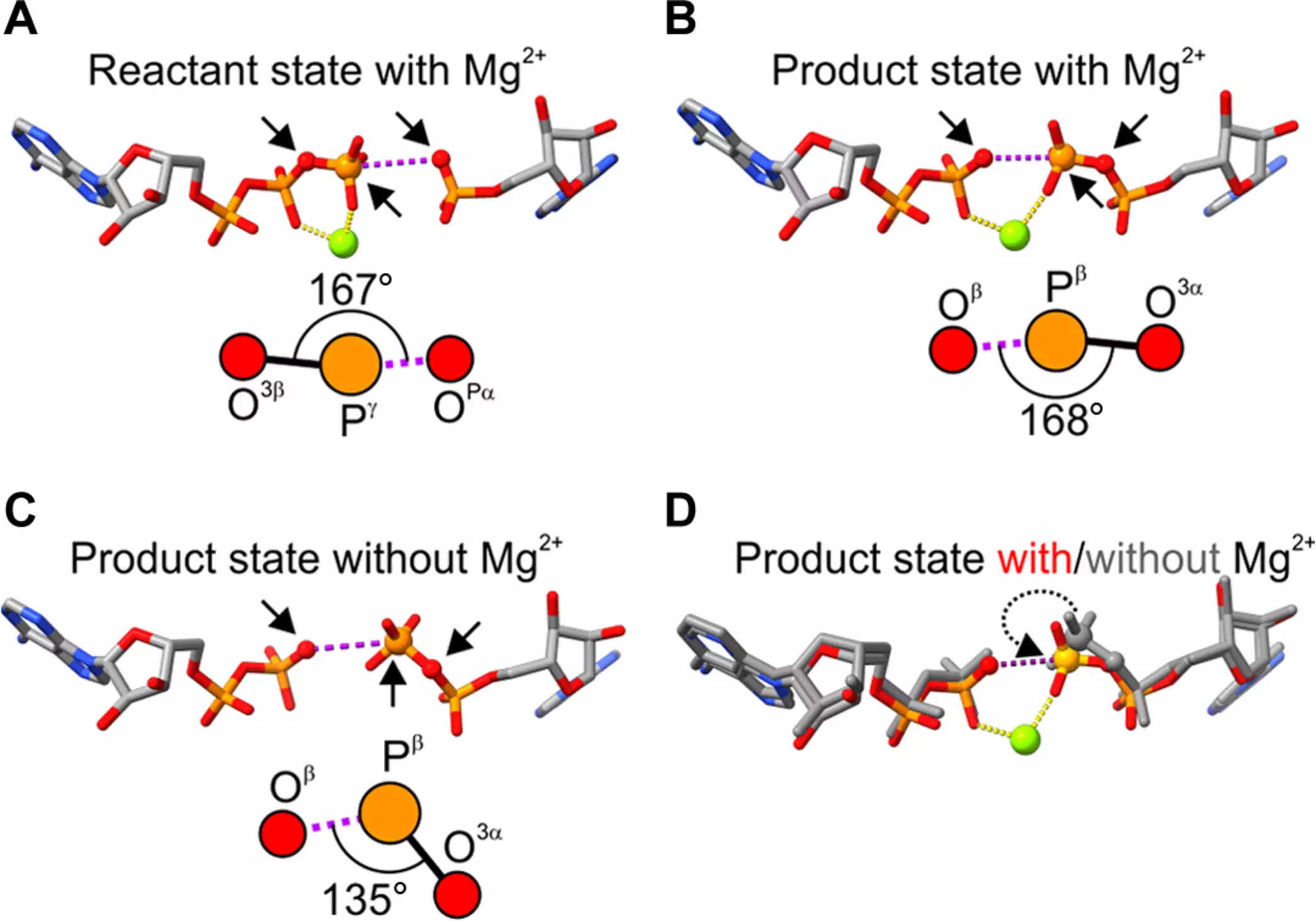Adenosine triphosphate (ATP) is often referred to as the energy currency of the cell, pivotal for the myriad processes that sustain life. From muscle contraction to cellular transport mechanisms, ATP is integral to the functionality of all living organisms. Understanding how ATP is synthesized within cells unlocks vital insights into not just biology, but also medical and environmental sciences. Recent breakthroughs in research have highlighted the significance of magnesium atoms in the catalytic process of ATP production—revealing the complexity of biochemical systems that govern life itself.
An international research team, spearheaded by Professor Magnus Wolf-Watz from Umeå University, has revealed intriguing details about the role of magnesium in ATP synthesis. Their findings, published in the esteemed journal Science Advances, could have transformative implications for our comprehension of various biological processes. Professor Wolf-Watz notes the wide-ranging influence of ATP, extending from muscular activity to the intricacies of bacterial interactions within the body. Without ATP, the metabolic engine of cells would stall, leading to an absolute breakdown in biological activity.
One key player in ATP production is the enzyme adenylate kinase, which facilitates the conversion of its substrates, ADP and AMP, into ATP. What sets this enzyme apart is its dependency on magnesium—a metal that serves not merely as a passive participant but plays a dynamic role in enzymatic reactions. While it has long been understood that magnesium enhances the reactions involving ATP via electrostatic interactions, the recent study sheds light on an additional and more crucial aspect: the precise geometry of molecules in the catalytic process.
The catalysis of ATP formation doesn’t just hinge on the presence of magnesium, but also on its ability to orient the reactant molecules at optimal angles within the active site of adenylate kinase. The research team uncovered that magnesium induces a specific angular change that allows ADP and AMP to align perfectly, thus facilitating a more efficient catalytic reaction. According to Wolf-Watz, these minute geometrical variations can yield substantial effects on ATP synthesis, illustrating the delicate balance inherent in biochemical reactions.
To validate their hypotheses, the team relied on crystallographic structures produced by Professor Elisabeth Sauer-Eriksson, which provided experimental evidence for the angular shifts instigated by magnesium. Complementing this work, researchers in the lab of Kwangho Nam at the University of Texas at Arlington employed computational chemistry techniques to examine the relationship between the angular changes and broader modifications in the enzyme’s structure. This dual approach—experimental and computational—allowed the scientists to establish a long-sought correlation between enzyme architecture and its catalytic functionality.
The insights gained from this research not only enrich our understanding of ATP production but could also pave the way for exploring other catalytic processes critical to life. As biological systems are inherently interconnected, the implications of how metal ions influence enzymatic activity could extend into areas such as pharmacology, biochemistry, and even bioengineering. The study serves as a reminder of the intricate dance between structure and function within cellular mechanisms, emphasizing that even the smallest atomic changes can have profound implications for life itself.
The discoveries made by Professor Wolf-Watz and his team signal a deepening understanding of the biochemical processes that sustain life. By uncovering the precise role of magnesium in ATP synthesis, they have unlocked a crucial piece of the puzzle in cellular bioenergetics. As we venture further into the realm of molecular biology, studies like these will undoubtedly illuminate pathways for innovation in science and medicine, inviting us to explore the uncharted territories of life at a molecular level.


Leave a Reply